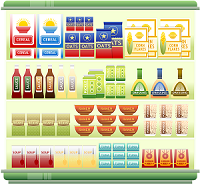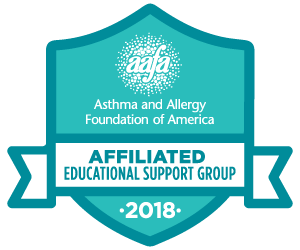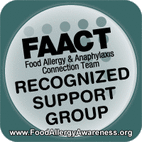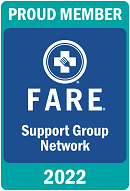 The only way to prevent a food-allergy reaction is to avoid the problem food. But you can’t know whether a food contains an allergen simply by looking at it. Laws and regulations like the Food Allergen Labeling and Consumer Protection Act of 2004 (FALCPA) have made it easier for people with food allergies to identify problem foods and avoid them. Managing life with a food allergy means reading packaged food labels every time you buy that food. This is true even if you have purchased the food hundreds of times because ingredients and manufacturing processes can change without warning. While all ingredients in a food are supposed to be listed in the ingredients list, FALCPA only covers the eight most common allergens: peanuts, tree nuts, milk, soy, egg, wheat, fish, and shellfish. Note that molluscan shellfish—such as oysters, clams, mussels or scallops—are not required to be labeled as a major allergen. What to Look For FALCPA-regulated allergens can be called out in one of three ways:
If you see your allergen featured in one of the above ways, it means the allergen is present in the food. Manufacturers must list an FALCPA-regulated allergen even if the amount is very small. FALCPA does not apply to meat, poultry or processed egg products, which are overseen by the U.S. Department of Agriculture. Non-FALCPA regulated allergens, such as sesame and mustard, may be present in a food but missing from an ingredient list if they are part of a spice or flavoring. Instead, they may be covered by a general term such as “natural flavorings.” “May Contain” Statements You may also notice precautionary language on food labels. These include statements such as “may contain,” “processed in facility that also processes” or “made on equipment with.” These warnings often follow the ingredients list. Such advisory labeling is voluntary for manufacturers. There are no laws governing or requiring these statements—neither when to include them nor what their wording should be. They may or may not indicate if a product unintentionally contains, or has come in contact with, a specific allergen. Likewise, the absence of an advisory label does not mean that a product is safe. Per the U.S. Food and Drug Administration (FDA), advisory food labels “should not be used as a substitute for adhering to current good manufacturing practices and must be truthful and not misleading.” Other Allergen Statements Phrases such as “peanut-free” and “egg-free” are not regulated. Product labels can bear these phrases but be made in facilities where the allergens are present. Always contact the manufacturer if you are unsure. More Tips for Reading Food Labels
Post contributed by Food Allergy Research & Education FARE’s mission is to improve the quality of life and the health of individuals with food allergies, and to provide them hope through the promise of new treatments. For more information on food allergies, visit www.foodallergy.org
0 Comments
Leave a Reply. |
Food for Thought is the blog for the Food Allergy Alliance of the Mid-South. FAAM's mission is to provide food allergy support, education, advocacy, fellowship & fun for Memphis, TN and surrounding areas.
Archives
August 2023
Categories
All
Terms of Use Disclaimer:
By using this site, you are agreeing to the terms of use stated. If you do not agree with these terms, please do not use this site. The content on this web site and any information presented by FAAM is for informational purposes only and NOT a substitute for medical advice, diagnosis or treatment. The authors are not offering individual medical advice; this material is for reference only. A physician or other qualifying medical professional should always be consulted for medical advice/diagnosis. The authors of this web site; anyone associated with FAAM as members, advocates, leaders, or advisors; Friends of FAAM and/or anyone involved with the production of this web site are not responsible, and do not assume responsibility for any loss, damage, injury, illness, death, or other negative impact that may occur after reading and using the information on this web site. If you have a medical emergency, call 911 immediately and follow up with a physician. |
Providing support, education, advocacy, & fellowship for the food allergy community of Memphis, TN and surrounding areas
P.O. Box 342907 | Memphis, Tennessee 38184-2907 | (901) 300-0790 | Email FAAM
FAAM is a 501(c)(3) nonprofit organization. Copyright © 2015-2024, Food Allergy Alliance of the MidSouth, All rights reserved.
FAAM is a 501(c)(3) nonprofit organization. Copyright © 2015-2024, Food Allergy Alliance of the MidSouth, All rights reserved.



